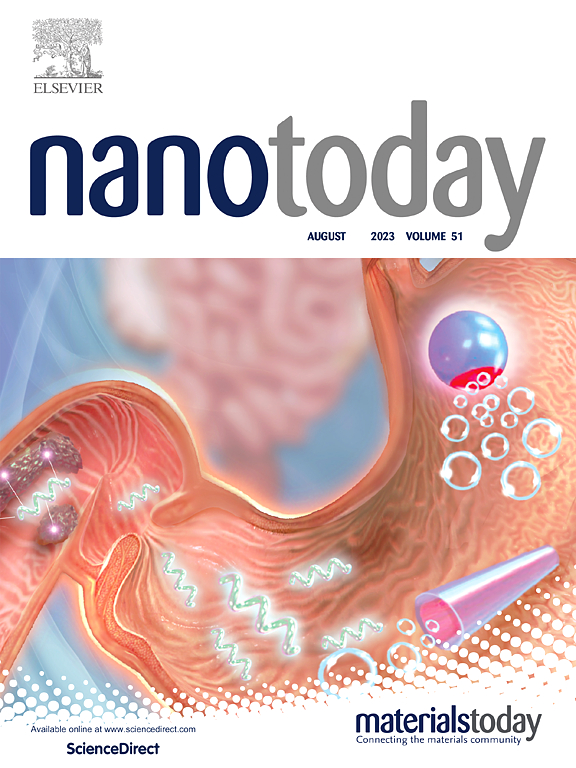Engineering mucus-penetrating and enzyme-responsive nanostructured carriers for precision targeting of curcumin's pharmacokinetics and colitis-alleviating pathways
IF 13.2
1区 材料科学
Q1 CHEMISTRY, MULTIDISCIPLINARY
引用次数: 0
Abstract
The development of advanced delivery systems that precisely control the absorption, metabolism, and therapeutic efficacy of bioactive compounds is a burgeoning area in nanomedicine. This study introduced an innovative strategy for modulating the pharmacokinetics and therapeutic pathways of curcumin through engineered mucus-penetrating nanostructured lipid carriers (CUR-NLC) and colon-targeted microparticles (CUR-MC). These nanocarriers are designed with hierarchical structures and enzyme-responsive materials to achieve site-specific drug delivery. CUR-NLCs demonstrated superior adhesion and penetration through the ileal mucosa, facilitating curcumin metabolism via host enzymes, while CUR-MCs enhanced colonic targeting, enabling enzyme-responsive curcumin release at inflamed lesion and promoting microbiota-mediated metabolism. In this vein, CUR-NLC achieved the highest peak concentration Cmax(CUR) and absorption rate (Ka) for curcumin, while CUR-MC improved hepatoenteral circulation and optimized the oral bioavailability and plasma concentrations of its active metabolite tetrahydrocurcumin (THC). Western-blot analysis revealed that CUR-NLC facilitated anti-colitis effect by suppressing inflammatory response through the NF-κB/TLR4 pathway. Furthermore, our research uncovered a positive correlation between the mucoadhesive efficiency of nanocarriers and their cellular uptake by macrophages. Notably, CUR-MCs demonstrated an increase in colon mucoadhesive capacity (18.35 folds) and macrophage internalization efficiency (28.74 folds) at the colonic mucosa, triggering a superior restoration effect on colonic mucosal inflammation. CUR-MC mitigated colitis by repairing the epithelial physical barrier and enhancing colonic mucosal immunity through the promotion of goblet cell proliferation and the production of occludin and mucin 2. This work highlights the potential of precisely engineered nanostructured carriers in facilitating drug adhesion and permeability efficiency across intestinal mucosa, extending pharmacokinetics of host-microbiome mediated metabolism and enhancing therapeutic efficacy, contributing to the development of site-specific drug delivery techniques in nanomedicine.
求助全文
约1分钟内获得全文
求助全文
来源期刊

Nano Today
工程技术-材料科学:综合
CiteScore
21.50
自引率
3.40%
发文量
305
审稿时长
40 days
期刊介绍:
Nano Today is a journal dedicated to publishing influential and innovative work in the field of nanoscience and technology. It covers a wide range of subject areas including biomaterials, materials chemistry, materials science, chemistry, bioengineering, biochemistry, genetics and molecular biology, engineering, and nanotechnology. The journal considers articles that inform readers about the latest research, breakthroughs, and topical issues in these fields. It provides comprehensive coverage through a mixture of peer-reviewed articles, research news, and information on key developments. Nano Today is abstracted and indexed in Science Citation Index, Ei Compendex, Embase, Scopus, and INSPEC.
 求助内容:
求助内容: 应助结果提醒方式:
应助结果提醒方式:


